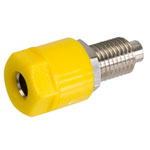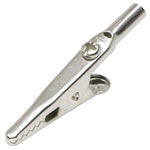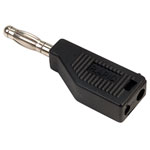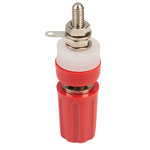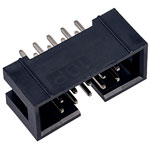
Standard range
Order Code:
Brand:
PJP
MPN: 20054Cd1000 EAN-13: 3760122593251 17-0595
- RoHS Compliant
- Country of Origin: France
- Free UK shipping available
| Qty | Unit Price (Ex VAT) |
|---|---|
| 20+ | £0.215 |
| 100+ | £0.176 |
| 1000+ | £0.139 |
Price per unit Ex VAT
Order in multiples of 20
A very low cost PCB mounting socket from PJP suited to 4mm connectors.
- Tin plated brass
- Rated at 2A
- PJP type 20054
| Connector type | 4mm Socket |
|---|---|
| Insulated | No |
| Mounting Direction | Straight |
| Mounting Type | PCB |
| Plug / Socket | Socket |
| Termination | Solder |
To use this facility please Sign In.
Sign InReviews
Economical and easy to label
Reviewed by: Matthew Astley - Thursday, September 27, 2018Agree with Mark (thanks for the tip on ply, hole size & delivery).
My approach was to drill a 5mm hole (OD of the socket) in cheap pine, dig a little extra around one side for the following "bump", then solder to the socket and apply PVA wood glue. Next time, the hammer!
Tip on labelling: a simple printout on A4 office paper, with the holes marked for drilling, can be glued over the top. I varnished with something (epoxy diluted in IPA? or 87-0670. I forget) and it looked nice. Not sure about durability. The flange on the socket will cover some ugliness around the hole.
Can be hammered into ply
Reviewed by: Mark Record - Tuesday, June 3, 2014These can be driven into 4.5mm holes in plywood along with a length of 20 swg copper wire (I use an old 4mm plug and a hammer to drive them in). This produces a remarkably reliable and durable way of making simple connections when making educational apparatus. My college has been using battery holders and lamp holders screwed to small ply rectangles (cut from 18mm shuttering ply) using these connectors hammered in to allow students to connect leads. With the ply blocks varnished before assembly our apparatus looks respectable and is incredibly economic to make.

